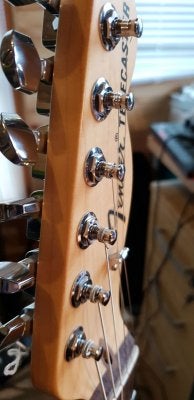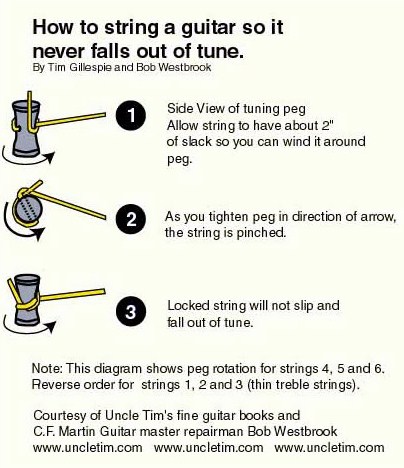bb_matt
Tele-Meister
After my initial stringing up of my new tele, with 11's, I realised what a shoddy job I'd done.
With my acoustics, I've always found it pretty easy, having done it so many times, I've no idea why I'm struggling so much with my new tele.
So, The top E is fine, I rewound the A so that the loops actually went below the hole, rather than above (yeah, I know, told you I did a shoddy job), the D was fine.
The G was a disaster, I literally had a single loop holding it on, so the angle to the nut was virtually straight. In the process of attempting to restring this, I've now broken two G strings - I have two left to work with, so I'm taking a break for some study.
In the process of restringing today, I also bust the B and low E - it's been a disaster.
With the lower, thinner strings, do you wind a few loops before threading through the hole?
This seems pretty difficult to do, without, I guess, causing the potential of string breakage?
Yep, this is a serious newbie question, but I think it's worth getting some advise here, if anyone can spare it without laughing...
About the only corny humour I've got from all this, is chatting to the wife about nuts and G-strings - well, she found it funny... never gets old, right?
"What are you doing in there, honey?"
"I'm just making sure my nut is right for this g-string"
With my acoustics, I've always found it pretty easy, having done it so many times, I've no idea why I'm struggling so much with my new tele.
So, The top E is fine, I rewound the A so that the loops actually went below the hole, rather than above (yeah, I know, told you I did a shoddy job), the D was fine.
The G was a disaster, I literally had a single loop holding it on, so the angle to the nut was virtually straight. In the process of attempting to restring this, I've now broken two G strings - I have two left to work with, so I'm taking a break for some study.
In the process of restringing today, I also bust the B and low E - it's been a disaster.
With the lower, thinner strings, do you wind a few loops before threading through the hole?
This seems pretty difficult to do, without, I guess, causing the potential of string breakage?
Yep, this is a serious newbie question, but I think it's worth getting some advise here, if anyone can spare it without laughing...
About the only corny humour I've got from all this, is chatting to the wife about nuts and G-strings - well, she found it funny... never gets old, right?
"What are you doing in there, honey?"
"I'm just making sure my nut is right for this g-string"



